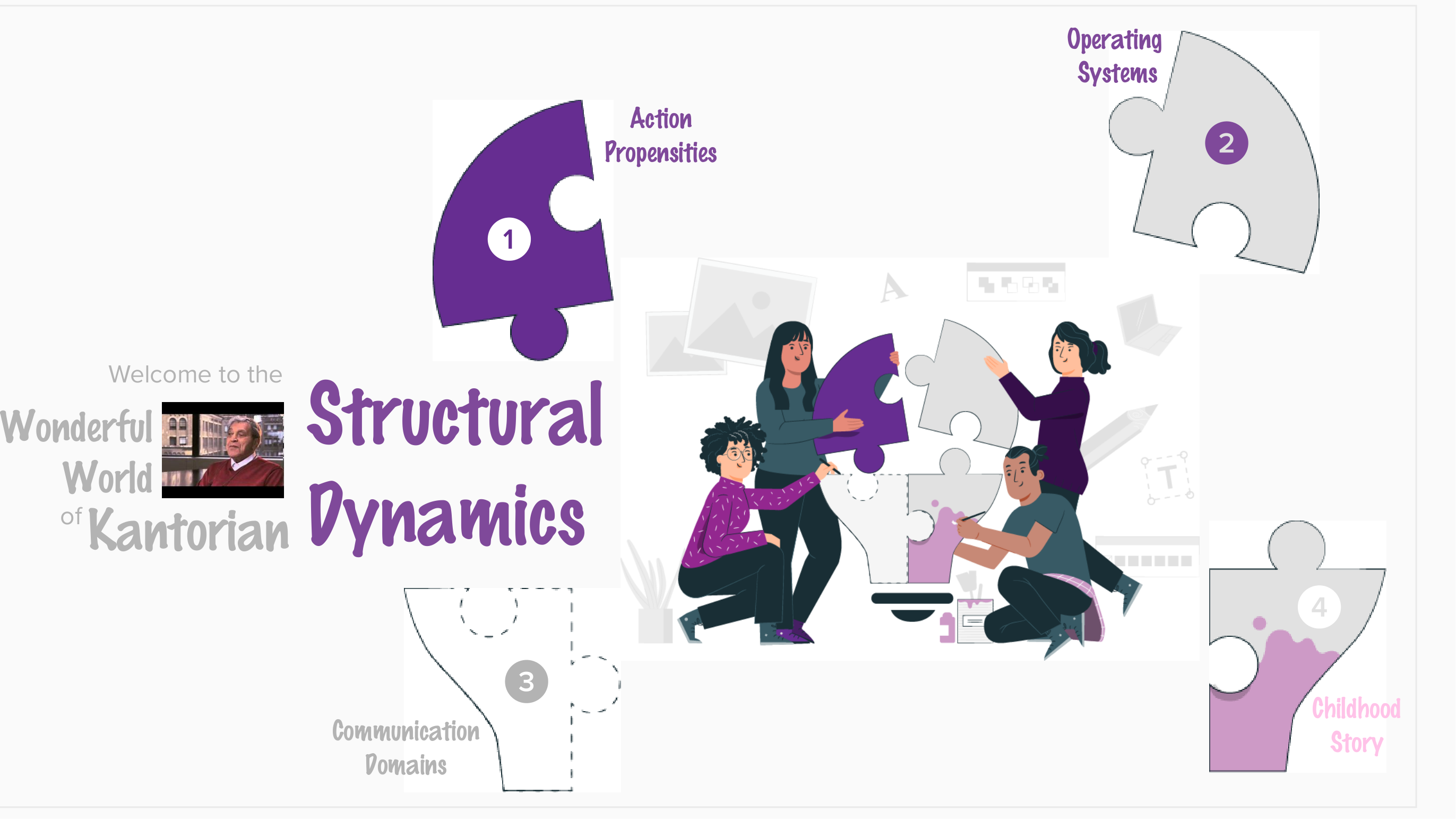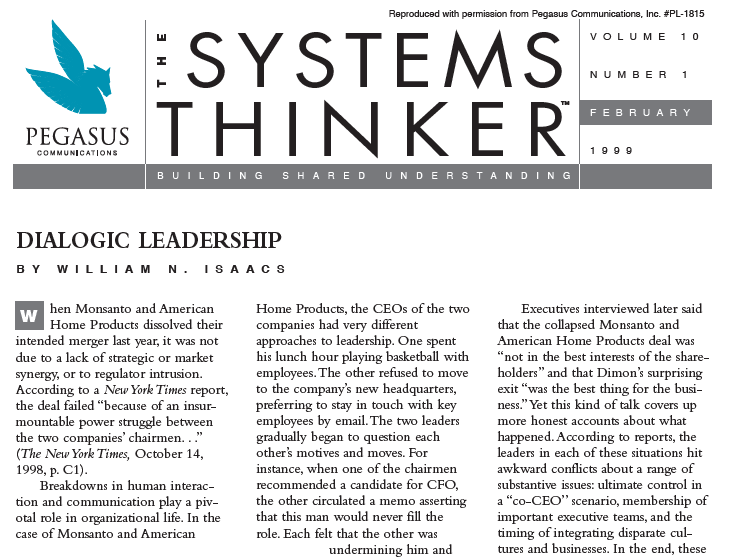
In this previous blog post, I unpacked my sense making on the difference between team coaching and facilitation and I referred to the work of Marsha Acker on the Art and Science of Facilitation. Here team coaching is framed as something that builds on the competency of facilitation, where the leader focuses less on the process and content and more on the structure.
What does this mean? Structure? Is this the organisational structure? When hierarchy enters the conversation with power and privilege? Is it the order in which things are discussed?
If you recall, we also touched on the differences between the Moral Story of communication and the Structural Story. When we look at the What and How of communication, we become immersed in the Moral Story. Issues of power and privilege speaks to structure, but in an entirely different way – amongst other things.
So what am I really talking about? Structural Dynamics! This team coaching approach supports sense making in what is going on in the structure of the exchange between people or entities within an organisation. In fact, any communication can be looked at through this structural lens as an expression of communicative competency and the hope to be skilled in dialogue (The mini course on the right on Dialogic competency for leaders explores this in more detail).
Structural Dynamics is founded by the late David Kantor and his book of the same title has made the phrase “Reading the Room” a popular reference when speaking to sensing what is happening in a conversation or exchange. But, it is not the kind of sensing where we pick up the tension you can cut with a knife, or suspecting that something is being held back – it is, at least at first, much more explicit.
Kantor believes that all forms of communication can be reduced into the model of Structural Dynamics. It has 4 levels – each increasingly less flexible and visible.
- Action propensities
- Operating Systems
- Communication Domains
- Childhood story
Without going into theory, let me illustrate the use of structure in a team coaching exchange.


The premise of coaching with this lens on communication is to support the growth and development of Leadership Range and Communicative Competency. Leadership range is the ability for leaders to own their behaviours from a Structural perspective, while increasing the ability to be flexible, discerning and skillful in calling on other parts of their Structural Range that they are not dominant in.
Let’s explore an example to illustrate.
This story starts like any other Bar-joke or case study might. A team of 5 people meet, with their leader and a team coach, to discuss a sticky decision with high stakes for everyone in the room. The team mostly operates with a democratic approach, hearing everyone’s inputs before a decision is made and they value their autonomy. The Leader is new to the organisation and is struggling to work with the team. Certain decisions, according to the leader, in sticky circumstances, should be made by the person with the most skin in the game – the leader.
The unnamed aspects of their relationship and assumed exchange between the team and the leader is around how decisions need to be made. The coach has a hypothesis around this, but is ethically bound not to diagnose or tell the leader and team, but to seek to reveal it so that they can see and name it. Whatever is sensed is held with curiosity and willingness to be wrong.


The behaviour in these meetings is typically that the leader positions the situation and refers to the Royal We in having to come up with a solution. The team listens, and then seem to turn away from the leader with their focus and attention on one another in solving this issue. The leader tries to participate, and although not dismissive, the team listens to the leader’s inputs and then continues with their collaborative work in the detail with one another.
Each person in the team typically has their say, they argue points back and forth and there is a lot of uncertainty which is unpacked as it arises. Let’s say that this is the 2nd meeting on this issue, an hour into the meeting, and the leader has started changing his behaviour. The leader becomes more directive, seems to express a sharper tone of voice when expressing himself, giving instructions and timelines and demanding that the team comes up with a plan that can be delivered within this time frame. The leader starts giving solutions, closing down options without further discussion, and seems very committed to getting a result as soon as possible.
As a result, the team withdraws, stops engaging with one another, and only one person in the team speaks, usually becoming a one-on-one exchange between the leader and this team member which may be a high stake or loaded conversation for them both.
Let's look at this Structurally
Level 2 Operating Systems

The Team is taking an Open approach – democratically seeking to hear each voice, and systematically addressing each dimension of the issue as they understand it. They are deep in exploring the meaning of each option, the implications, risks, pros and cons and how they are going to build this new request in the best way possible. Here, two things stand out. Open and Meaning – they are part of Level 2 and Level 3 respectively. Meaning is a communication domain that focuses on making connections between things, wanting to understand, knowing why something must be done, and details around how things are done.
Open is an operating system (Level 2), which speaks to the democratic approach, hearing each person’s input and opinion, exhausting all options. The combination of the two can feel like endless philosophical conversations, over several meetings, hearing each person’s input and being dictated to by the tyranny of process: “It takes as long as it takes.”
Level 1's Stuck Patterns

The leader seems to be pulling on a closed operating system by giving answers, reducing options to a singular one without discussion; by centralising decisions and by prioritising a singular voice of authority over that of the collective. This is Closed operating system. Where the Open operating system benefits and prioritises the collective, the closed operating system benefits authority and the institution (organisation). Secondly, the leader seems to prefer action, results, outcomes and delivery over meaning making. In Structural Dynamics, this is the communication domain of Power.
So, without looking at who is right or wrong, what is needed right now, or trying to bring the two entities together through mediation techniques, or facilitative process – the team coach is leading from behind. The team coach notices that when the one team member and the leader enter a one-on-one exchange in front of the whole team, that they are in a stuck pattern:
Level 1: Action Propensities or "Four Player Model"

Level 3 Communication Domains

The member makes a Move (suggestion), and the leader opposes it which is followed by his own Move (instruction) and the team member opposes it giving a reason why the leader is wrong. This continues for several minutes until the escalation seems to reach a crisis. Each time this happens, the leader makes the final decision, gives the deadline and instructs the team to get it done, without any further instruction and leaves the room.
This is what the team coach has been called in to solve – except, that the leader is the one who asked HR for team coaching, hoping that coaching will fix the team’s lack of delivery and commitment. The team coach, taking a systemic approach, knows that what is assumed, believed, unspoken, repressed, avoided or not inspected will continue to govern the whole system. This exchange is caused and maintained by both entities.
So the coach offers an observation (Bystand) from Level 1 of Structural Dynamics about the exchange between the team member and the leader: “Sorry to interrupt your conversation gentlemen, may I offer an observation?”
“Yes, go ahead”, the leader says. The coach turns to the team member with a questioning intent, and he nods.
“I am becoming aware that as you are speaking, each makes a suggestion, which the other opposes, in turn making another move, which is opposed. What is it like to be in this pattern around this issue?”
The two start sharing their frustration and discouragement.
“What parts of what you have heard from each other do you at least, in principle, agree on?”
Soon, they start to express Follow – another Action propensity in Level 1 (Move, Oppose, Follow, Bystand). The coach asks them what is different, and they notice that they actually have more things they agree on, in common, than what they disagree on.
Next, the coach asks permission to ask about another possible observation and with permission shares that when they are in this pattern, there also seems to be little additional information shared or observations offered about each of their experiences or needs and perhaps even sufficient information about the work itself – a Bystand seems to be missing. The coach asks them how what comes to mind as they hear this observation.

The team member immediately shares that it is difficult for them to reason with the leader because they do not understand the history of the product, and they feel like the leader is not interested in the reality of the work – he only cares about how he will be perceived at Exco. Silence follows.
The coach asks the leader what it is like to hear that and he shares that he was not aware of how he was coming across; that he is under so much pressure to deliver something he doesn’t understand and he feels out of control. The team member follows: “Well, so do we.” After some silence, the whole room seemed to warm a little.
The coach asked the two what might it be like if they had their conversation again knowing what they now know. They said that they would be willing to try and the coach invited them to remain aware of the four patterns of Move, Oppose, Follow and Bystand to see if they can have a good mix of all four. The coach asked permission to interrupt every now and then, if there was a pattern emerging again. They agreed.
If you change the Structure, you change the Outcome
- David Kantor
Soon, the two of them got to the crux of their misunderstanding: the leader realised that the challenge seems simple while in fact it is very complicated for the team and the team member learned something about what was going on in the business domain, that changed how he thought of the solution. Neither of these spoke about the additional information before. The leader also did not understand that not everything is up to the team – they have some dependencies that they have been dealing with themselves.
The coach then asked the team what it was like to observe this exchange and what they learned from it. Each shared their experience and insight, which sparked conversation with the leader and team member alike and the coach asked what they want to take forward from this experience.
In subsequent exchanges, the coach worked with the team to become aware of their propensity for Open Meaning and the leader’s preference for Closed Power when he is in high stakes situations. This essentially is a clash on two fundamental levels of communication which causes people to not be able to hear, feel or connect with each other. It is no longer about what was said or how it was said, but rather about the deeper STRUCTURES that informed their communication exchanges, the patterns of their communication, and governed their way of working together.

What else does Structure refer to?
So far we have explored one interpretation of the concepts of Structure as Acker defined it and I would like to build on this by referring to another that was perhaps not intended by Acker in the meaning of the term, but, nevertheless seems relevant.
Structure can also speak to the operating system for enterprise transition, as defined by Adventures with Agile (AWA). In this triangle, the idea is that leaders are the only ones with the authority to change the structure of the organisation: yes, reporting lines and team composition, but also processes, procedures, policies, flow of information, gateways, approvals, launch dates, how decisions are made, budgets, what information is withheld or shared and when. These are all structural aspects of the organisational life.
download this article by Kantor above

The principle is that structure influences culture. If you want to change the culture, you need to change the structure. In turn, leaders can only change how they show up if the culture changes and enables this. Yes, leaders are as much constrained by the collective culture than team members feel constrained by the structure. Leaders cannot change if the culture does not support it. We all know the adage that culture eats strategy for breakfast.
So, when we look at structure as team coaches, we also look at these dimensions and how they inform the culture and leadership in the team.
Let me also clarify that as a team coach and facilitator, it is really challenging to lead from the front, and work actively with Structure. Fortunately, as humans, we seem to be able to focus well on one thing at a time – and this is not different for collective work. Leading from the back of the room, in my experience, is the best position from which to work with structure and this requires the team coach and facilitator to remain out of the content, remain neutral and to activate levels of listening that are deeper and demand more skill.

In summary:
We discussed what the Structure refers to in the blog post about the difference between facilitation and team coaching. This refers to the Leadership Triangle, which speaks to the structural aspects of organisational life as defined by AWA; and Structural Dynamics, which is a lens through which a team coach might look at team engagements and communicative competency.


